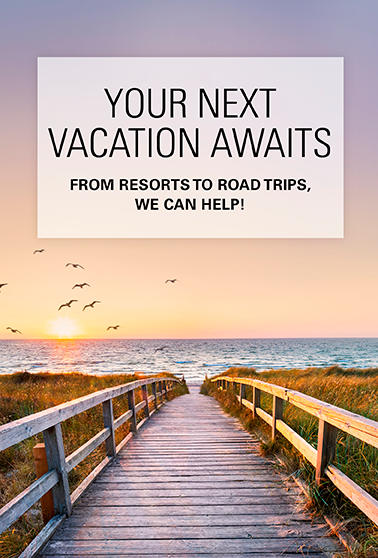Your Guide to Tacoma’s History and Attractions
The Puyallup Tribe, first occupying the bluffs Tacoma now sits on, called the place Squa-szucks (prominent point). “Tacoma,” one version of a tribal name for Mount Rainier, is what stuck. It’s apt, because few locales command such a panoramic view of Washington state’s highest peak.
Since their earliest days, Tacoma and Seattle competed to be Puget Sound’s top town. Tacoma scored big in 1873 when the Northern Pacific Railroad chose to locate its West Coast terminus there, inspiring the slogan “City of Destiny.” Tacoma’s prestige backslid by the mid-20th century when industrial effluent and its tideflat whiffiness gave rise to a stigma known as the “aroma of Tacoma.”

Museum Row and Performance Venues
Museum Row has been Tacoma’s tourism headliner since the late 1990s, when multiple museums located around Pacific Avenue, including:
- The Washington State History Museum, where the state historical society features its own worthy exhibits as well as traveling displays from institutions such as the Smithsonian. Kids will love the state’s largest permanent, public model-train layout.
- The Museum of Glass, with what’s claimed to be the West Coast’s biggest, most active museum glass studio. Its presence is a tribute to Tacoma native and iconic glass sculptor Dale Chihuly, whose works are featured in the Chihuly Bridge of Glass, a pedestrian overpass leading to the museum.
- Tacoma Art Museum, with its own landmark Chihuly display and much more.
- Children’s Museum of Tacoma, with interactive playscapes geared to kids 8 and younger, known for its welcoming pay-as-you-will admission policy.
Nearby is an auto-lover’s dream. LeMay, America’s Car Museum, is based on the late Harold LeMay’s collection, chock-full of gleaming grills and fabulous fins. Besides running a local garbage-collection company, LeMay had what was reputed to be the world’s largest, privately owned collection of auto memorabilia and motor vehicles – more than 3,000 at its peak.
Many of these museums offer discounts to AAA Washington members. Find free parking on weekends when commuters haven’t filled Tacoma Dome Station garages, and ride the free Link light rail train to Museum Row. The LeMay museum is a 10-minute trek.
Tacoma has been a destination for pop concerts and public events at the Tacoma Dome and Emerald Queen Casino for decades. Enjoy theater and other performances when shows resume downtown at the classic Pantages Theater, which opened in 1918 as a vaudeville venue; the Rialto Theater, originally an Art Deco movie palace; or the contemporary Theater on the Square. Tacoma Arts Live, which manages all three, can tell you what’s on.

Maritime Scene
Lt. Charles Wilkes named Tacoma’s Commencement Bay in the 1840s when his United States Exploring Expedition started its survey of Southern Puget Sound here. Now a busy commercial port, this is the birthplace of Foss Maritime, which was founded in 1889 when Norwegian immigrant Thea Foss started renting out her rowboats and has grown to one of the nation’s largest tugboat companies.
Today, walk a 1.5-mile public esplanade along Thea Foss Waterway, a former Superfund site that is now a showcase of marinas, restaurants and urban housing. Visiting tall ships tie up at Foss Waterway Seaport, a maritime museum in a 120-year-old grain warehouse full of locally built boats and rarities such as Ernest Hemingway’s scuba tanks and Jacques Cousteau’s wetsuit.

Ruston Way and Point Defiance
For more places to stretch your legs, cycle, have a picnic or find restaurant dining, head from downtown out Schuster Parkway to Ruston Way. The waterfront walking/biking path stretches 3.5 miles, passing numerous restaurants, skirting the tony new Point Ruston commercial and residential complex, and ending at the 760-acre Point Defiance Park. A final trail link opened in 2019 with a soaring pedestrian bridge and a series of playground-like slides that lead to the marina below.
Established in 1888, the park includes old-growth forest, miles of hiking trails, the Point Defiance Zoo & Aquarium, a splendid 5-mile loop drive, formal gardens, a swimming beach, and a replica of Fort Nisqually, an early fur-trading outpost.
A park annex, Dune Peninsula, opened in 2019 on a former copper-smelter slag dump. The name and themes in the park’s public artwork, derive from Tacoma native Frank Herbert’s futuristic novel “Dune,” set on a harsh planet said to have been inspired by his life experiences here in the 1950s when Tacoma was one of America’s most polluted cities.
Symbolic of Tacoma’s rebirth, a $75 million cleanup and redevelopment of this site have created a gorgeous complex of waterfront paths, sweeping lawns, dramatic earthscapes and stunning views of the city’s namesake mountain.
–Written by Brian J. Cantwell, last updated in September 2022.









